Ghee vs Butter
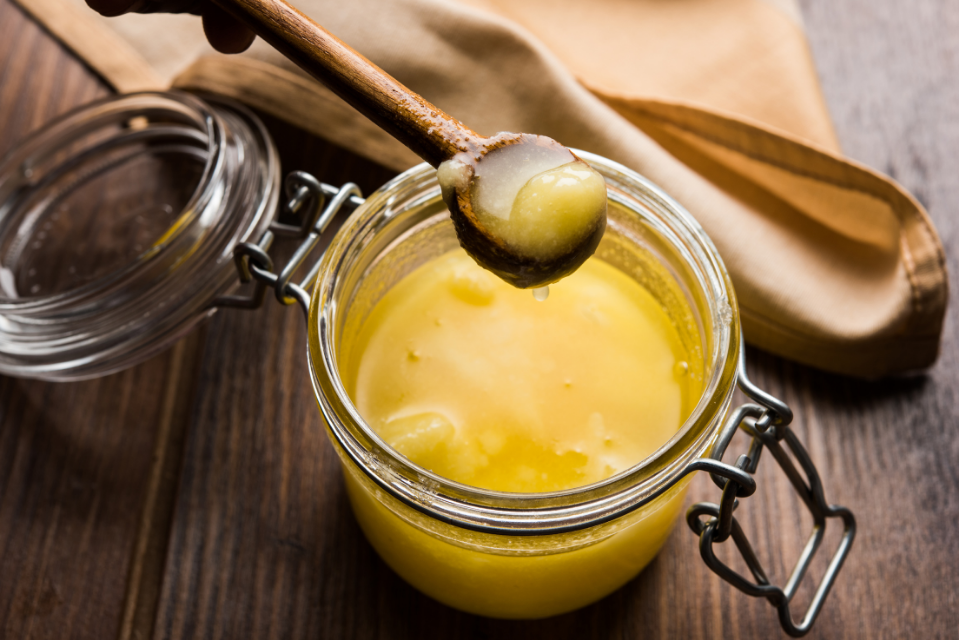
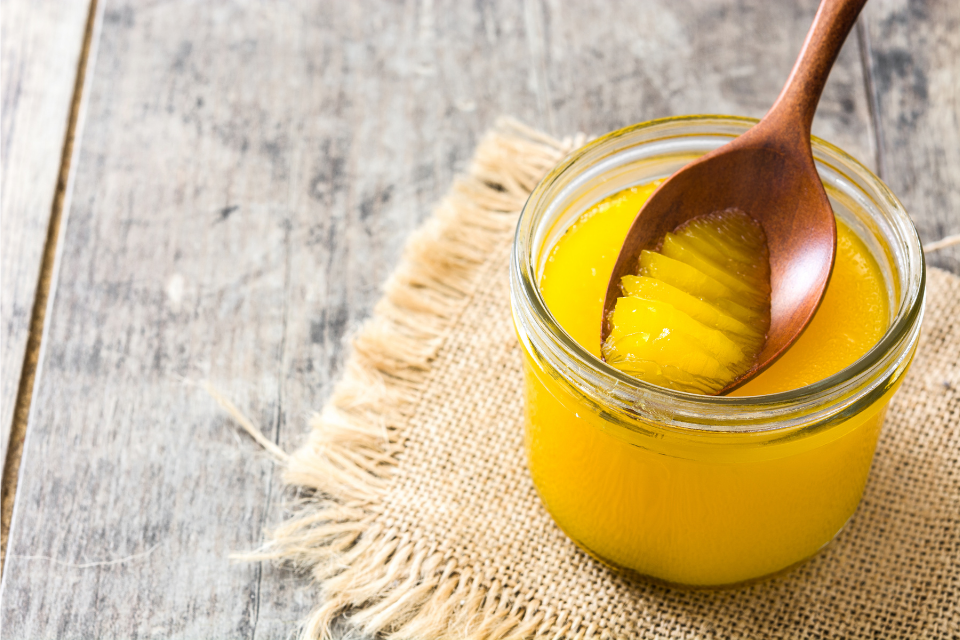

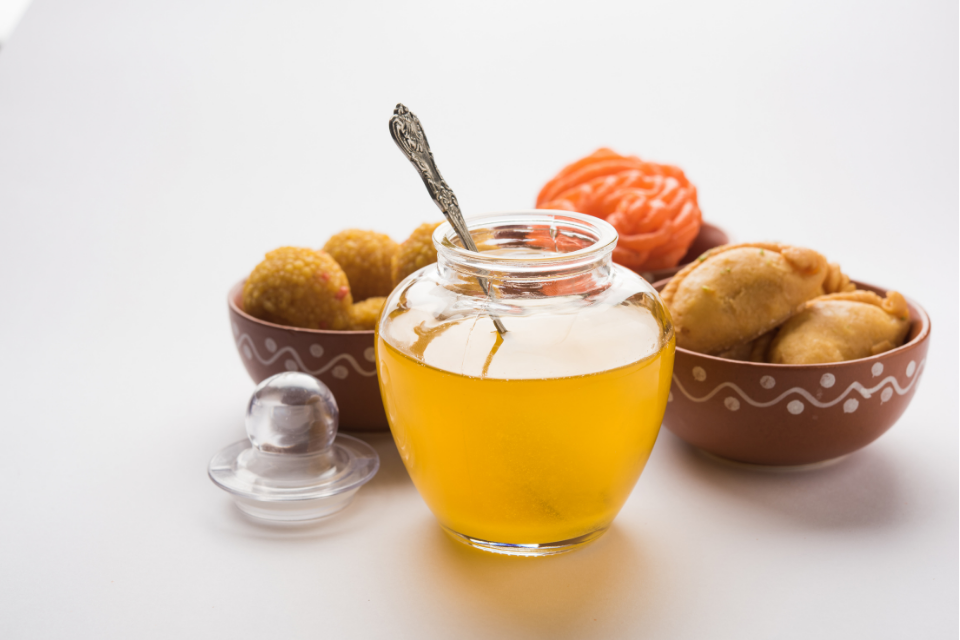
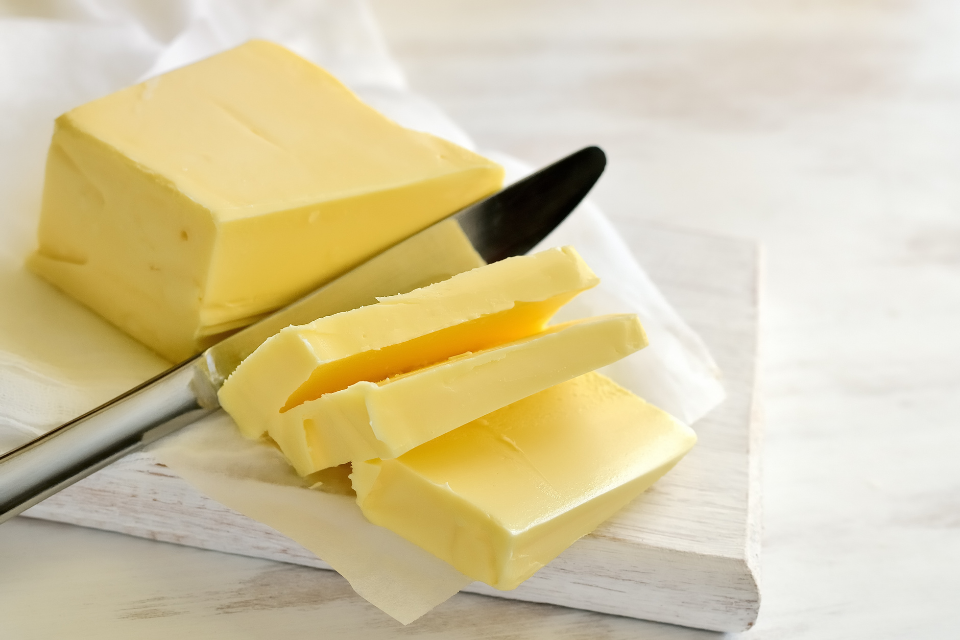
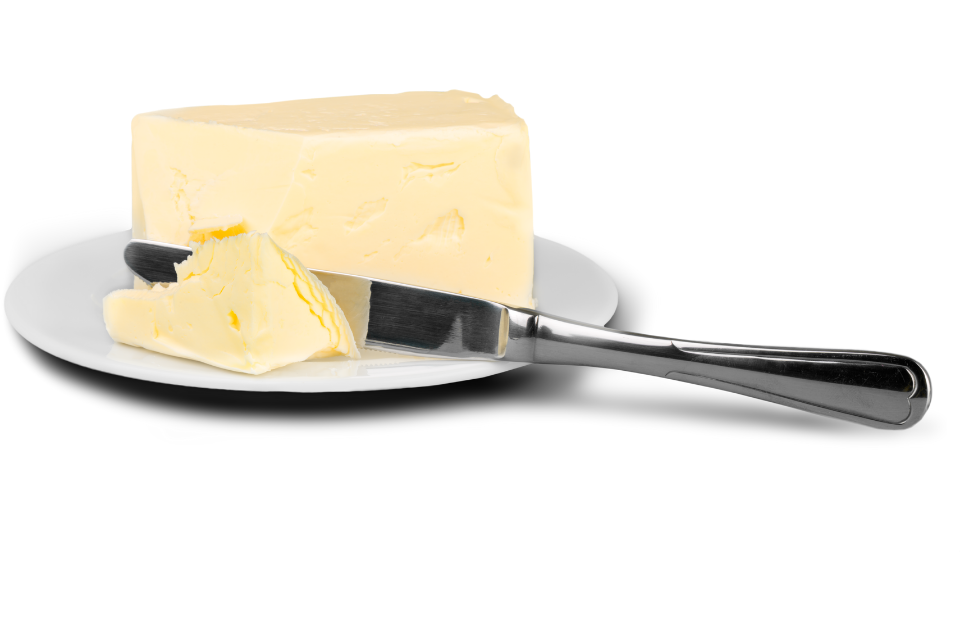
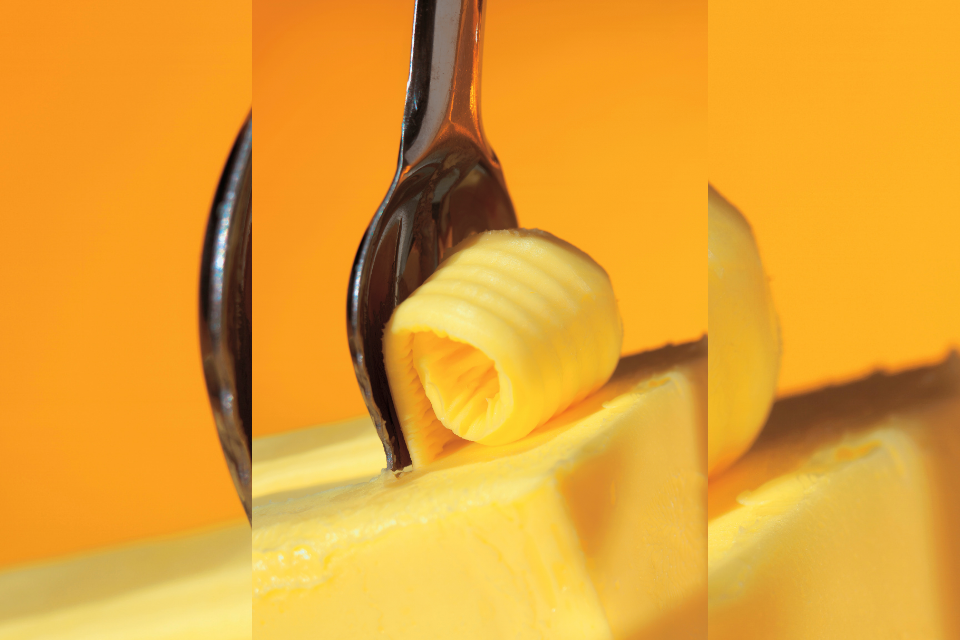
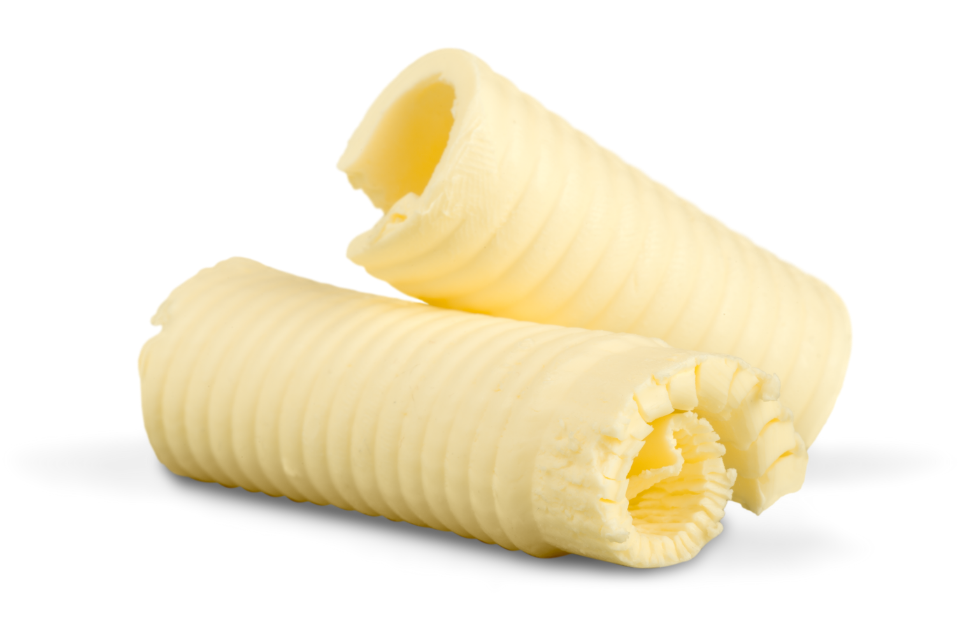
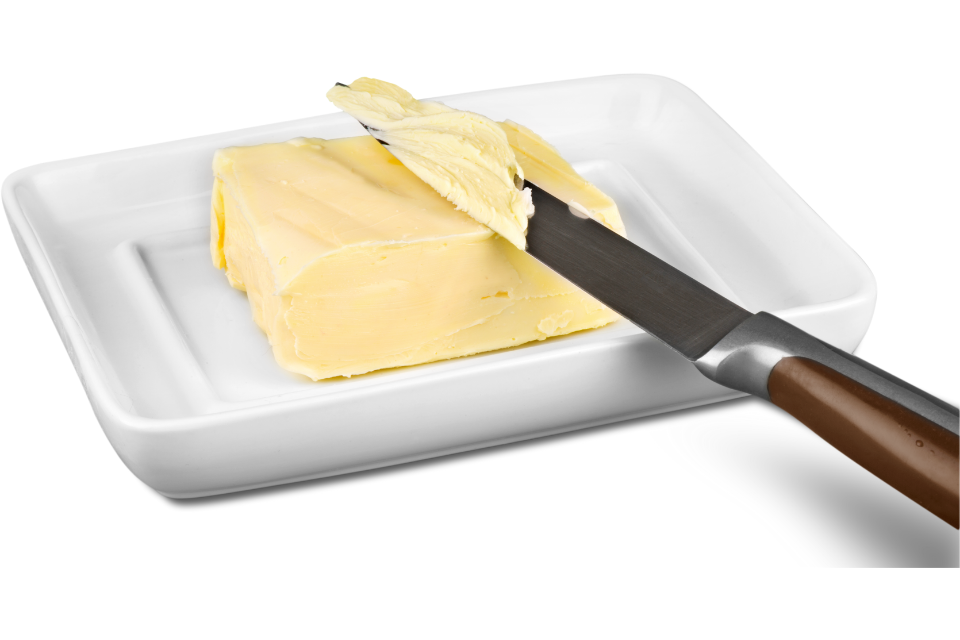
Ghee vs Butter
Ghee has long been a staple in Indian cuisine and recently become quite popular in certain circles elsewhere.
Ghee is a type of clarified butter that contains fewer dairy proteins than regular butter. This ingredient can be used in place of regular butter, but is it healthier, and does it have any benefits?
Few praise it as an alternative to butter that provides additional benefits and others question whether ghee is superior to regular butter or may even pose health risks.
Ghee vs Butter – We know exactly where this question is coming from!!
For ages we knew that cholesterol was bad for you. Butter kills you, eat margarine. Skip the yolk, make a ‘heart healthy’ omelet. Fries? Disgusting!
Scenario has changed. CHOLESTEROL HAS NOTHING TO DO WITH HEART!
Yes, you heard that right. Cholesterol levels has no impact in occurrence of heart disease and this forces us to remove it from the culprit list while the new entries are refined carbohydrates (flour, sugar etc.) and they are the killers.
The debate on which is healthier between ghee and butter has been raging for ages. Ghee is often deemed as a hurdle in our weight loss journeys. It is ousted as fattening and unhealthy. On the contrary it is, in fact very healthy. Ghee can be used as a substitute for butter, and ghee might be a more healthful alternative for using in cooking.
What is Ghee?
Ghee is a form of highly-clarified butter that is traditionally used in Asian cooking. Ghee is typically made from cow’s milk and by melting regular butter. The butter separates into liquid fats and milk solids. Once separated, the milk solids and water are removed, which means that ghee has less lactose than butter and it’s more concentrated in fat than butter. Given that its milk solids have been removed, it does not require refrigeration and can be kept at room temperature for several weeks.
Traditionally, ghee has been used as cooking oil, an ingredient in dishes, and in Ayurveda therapies. Ghee has been used in Ayurvedic medicine since ancient times. Ghee can be had daily as a source of saturated fats. Children can afford to have a larger quantity. The absence of water even makes ghee shelf-stable, meaning it can be stored without any refrigeration for extended periods of time
Ghee is actually a derivative of butter. Ghee is nutritionally dense, meaning it’s packed full of fat-soluble vitamins A, D, E, K, and health-benefiting nutrients, key players in overall health.
- When you cook with ghee, it ensures that you are not exposed to carcinogens. Most oils, when heated, produce free radicals that can trigger cancers of different kinds.
- It hydrates your skin and hair.
- Ghee is entirely natural. Due to its low moisture content, ghee’s shelf life is quite long.
- Ghee has cancer-fighting CLA (Conjugated Linoleic Acid). CLA is a polyunsaturated fat that help increase fat loss. It has been found to combat cardiovascular diseases as well as cancer.
- Ghee can be good for lowering bad cholesterol and increasing good cholesterol.
- Ghee is a nutritional powerhouse.
- It boasts of anti-inflammatory properties. In Ayurvedic medicine, ghee was copiously used to treat swelling and burns.
- Ghee is high in Omega-3s and butyric acid, a short-chain fatty acid which is good for your gastrointestinal tract. It also helps in healing and repairing stomach lining.
- The clarifying process makes ghee completely free of the milk sugar lactose and the milk protein casein. For people who have allergies or sensitivities to these dairy components, ghee is the better choice.
What is Butter?
Butter is a product made from the solid components in milk (fat and protein) and by separating the solids (butterfat) from the liquid (buttermilk). Butter is one of the most highly concentrated forms of fluid milk and has a rich flavor that is widely used as a spread, as well as for cooking and baking. Butter usually consists of approximately 80 percent fat, 15 percent water, and five percent protein. The small amount of protein in butter acts as an emulsifier allowing the water and fat to stay suspended in single-phase solution. The unique mixture of fats on butter allows it to stay solid at room temperature and melt at approximately 90 degrees Fahrenheit. Although butter is very low in protein, it still contains enough allergenic whey proteins to cause reactions. Therefore, people with a milk allergy should be careful with butter, or avoid it altogether. At the end of the day, butter is healthy in moderation, but excessive consumption should be avoided.
Butter is mainly composed of fat, such as saturated, monounsaturated, and dairy trans fats.
Fats in butter
- It’s basically the fatty portion of milk that has been isolated from the protein and carbs. Butter is one of the most complexes of all dietary fats, containing more than 400 different fatty acids.
- Polyunsaturated fats are only present in minimal amounts, about 2.3% of the total fat content
- It is very high in saturated fatty acids (about 70%) and holds a fair amount of monounsaturated fatty acids (about 25%).
- Other types of fatty substances found in butter include cholesterol and phospholipids.
Short-chain fats
- Around 11% of the saturated fats in butter are short-chain fatty acids (SCFAs), the most common of which is butyric acid.
- Butyric acid, a short-chain fatty acid which is good for your gastrointestinal tract. It also helps in healing and repairing stomach lining.
Dairy trans fats
- Unlike trans fats in processed foods, dairy trans fats are considered healthy.
- Butter is the richest dietary source of dairy trans fats, the most common of which are vaccenic acid and conjugated linoleic acid (CLA)
- CLA reduces body fat, cardiovascular diseases and cancer, and modulates immune and inflammatory responses as well as improves bone mass
The benefits of Butter include
- Butter contains some important nutrients such as Vitamin A, Vitamin E, antioxidants, riboflavin, phosphorus, and calcium.
- It can protect your cells from free radicals, boost your immunity, improve your vision, and increases your chances of preventing the onset of breast and stomach cancer.
- It contains mostly saturated fats, which, contrary to popular notions, have no link with heart conditions. New research shows that fats in butter may drag down your chances of contracting heart diseases.
- Butter helps in improving adrenal and thyroid health.
- It protects us against weakening arteries.
- Butter protects against tooth decay.
- Butter has been known to be a source of Activator X that helps our body to absorb minerals.
How to Store Butter
Butter should be kept refrigerated below 40F to protect against rancidity. Reducing exposure to oxygen and light by storing butter tightly wrapped and in a dark place (such as a refrigerator) will also delay rancidity. Keeping butter tightly wrapped is also important to protect it from absorbing rogue flavors. At refrigerated temperatures, butter will stay fresh for up to four months. Butter can also be frozen and kept fresh for up to a year. At room temperature, the length of freshness will depend on the butter’s exposure to light and oxygen, but butter will generally stay fresh for several days unrefrigerated. Covering butter in a ceramic dish or butter bell will help preserve freshness at room temperature by reducing oxygen exposure and heat. Butter that has a strong smell or a bitter or sharp flavor has most likely gone rancid and should be discarded.
Ghee vs. Butter
Though these culinary twins can simply add soul to any delight, but their differences actually make them perfect for various cuisines. Interestingly, both ghee and butter are churned out of cow’s milk, their nutritional profiles and fat content are very similar. However, ghee is better for people suffering from lactose intolerance as it has slightly low-protein levels as compared to butter, which makes it a better choice for people suffering from lactose intolerance. On the other hand, butter is great for someone banking on a high-protein diet, as it has high levels of dairy fat, casein and lactose.
Ghee has a higher fat and calorie content. But the difference is marginal. One tablespoon of ghee has about 115 calories and 14.9 grams of fat. Ghee is rich in fatty acids. The ratio of omega- 3 to omega- 6 fatty acids in ghee is considered ideal but only in pure ghee. One tablespoon of salted butter has about 100 calories and 11.52 grams of fat. The calorie in one tablespoon of butter equals an entire banana.
Ghee has a higher smoking point (252°C) than butter (177°C). So it can withstand more heat and would not stick to the bottom of your cooking pan, which makes it ideal for sautéing.
What we can conclude is that both butter and ghee are a preferable substitute to most other cooking oils as they both produce less acrylamide when heated, a chemical that ups the risk of cancer. Ghee and butter should be consumed in controlled amounts based on individual preferences.






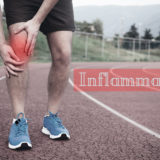
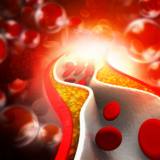
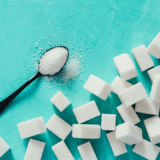





2 comments
martyl
November 29, 2023 at 10:09 am
Thank you, I have just been searching for information approximately this topic for a while, and yours is the best I have found out so far.
Shaun Lawson
May 15, 2024 at 1:35 pm
I have been surfing online more than 3 hours today, yet I never found any interesting article like yours. It is pretty worth enough for me. In my opinion, if all web owners and bloggers made good content as you did, the web will be much more useful than ever before.